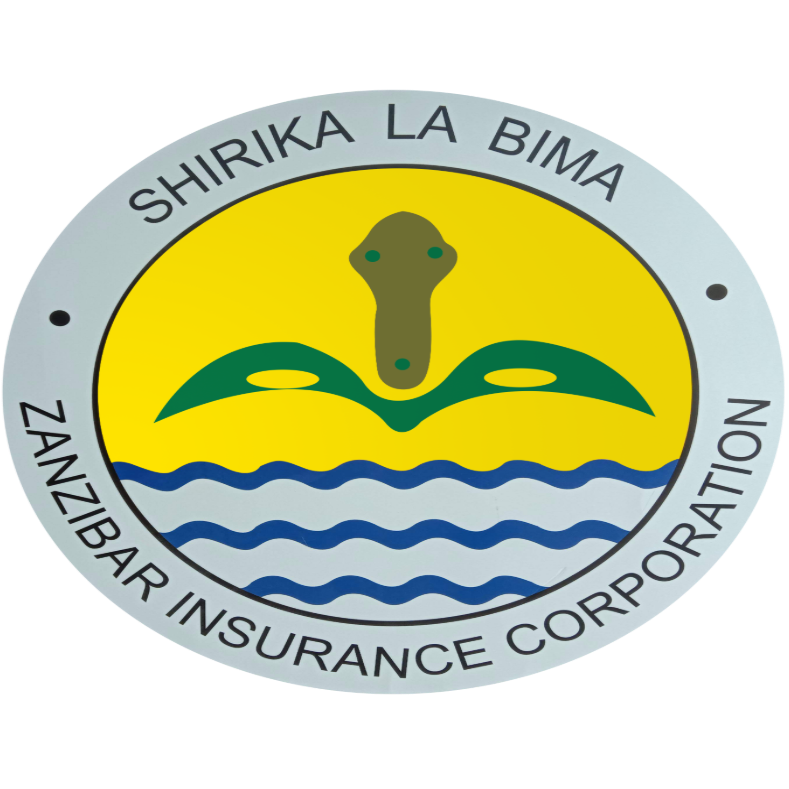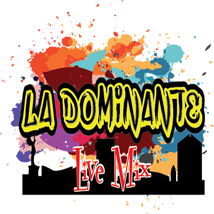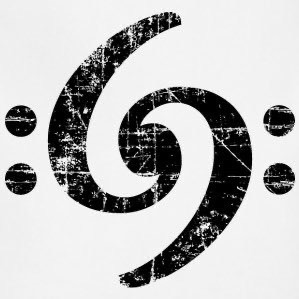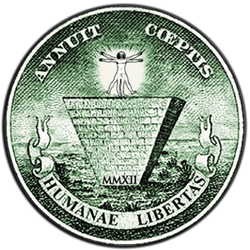Important Information
As of January 1, 2020, Radionomy will migrate towards the Shoutcast platform. This evolution is part of the Group’s wish to offer all digital radio producers new professional-quality tools to better meet their needs.
Shoutcast has been a leader throughout the world in digital radio. It provides detailed statistics and helps its users to develop their audience. More than a thousand partners carry Shoutcast stations to their connected apps and devices.
Discover the Shoutcast solution.
Mina / 100 search results
Sort by relevance popularity name newest
Mina
Anna Maria Quaini or Mina Mazzini, OMRI (25 March 1940), known as Mina, is one of the most successful Italian singers of all time. She was a staple of Italian television variety shows and a dominant figure in Italian pop music from the mid-1960s to mid-1970s, known for her three-octave vocal range, the agility of her soprano voice, and her image as an emancipated woman.In performance, Mina combined several modern styles with traditional Italian melodies and swing music, which made her the most versatile pop singer in Italian music. Mina dominated the Italian charts for fifteen years and reached an unsurpassed level of popularity in Italy. She has scored 77 albums and 71 singles on the Italian charts.Mina's TV appearances in 1959 were the first for a female rock and roll singer in Italy. Her loud syncopated singing earned her the nickname Queen of Screamers. The public also labeled her the Tiger of Cremona for her wild gestures and body shakes. When she turned to light pop tunes, Mina's chart-toppers in West Germany in 1962 and Japan in 1964 earned her the title of the best international artist in these countries. Mina's more refined sensual manner was introduced in 1960 with Gino Paoli's ballad "This World We Love In", which charted on the Billboard Hot 100 in 1961.Mina was banned from Italian TV and radio in 1963 because her pregnancy and relationship with a married actor did not accord with the dominant Catholic and bourgeois morals. After the ban, the Italian broadcasting service RAI tried to continue to prohibit her songs, which were forthright in dealing with subjects such as religion, smoking and sex. Mina's cool act combined sex appeal with public smoking, dyed blond hair, and shaved eyebrows to create a "bad girl" image.Mina's voice has distinctive timbre and great power. Her main themes are anguished love stories performed in high dramatic tones. The singer combined classic Italian pop with elements of blues, R&B and soul music during the late 1960s, especially when she worked in collaboration with the singer-songwriter Lucio Battisti. Top Italian songwriters created material with large vocal ranges and unusual chord progressions to showcase her singing skills, particularly "Brava" by Bruno Canfora (1965) and the pseudo-serial "Se telefonando" by Ennio Morricone (1966). The latter song was covered by several performers abroad. Shirley Bassey carried Mina's ballad "Grande grande grande" to charts in the U.S., U.K., and other English-speaking countries in 1973. Mina's easy listening duet "Parole parole" was turned into a worldwide hit by Dalida and Alain Delon in 1974. Mina gave up public appearances in 1978 and has continued to release popular albums on a yearly basis to the present day.Queen of Screamers (1958–1961)While on summer holiday in Versilia on 8 August 1958, Mazzini gave an improvised performance of the song "Un'anima tra le mani" to amuse her family after a concert at the La Bussola night club. During the following nights, Sergio Bernardini, the owner of the club, held her back in her attempts to get back on stage.In September, she started her solo career with the backing of the band Happy Boys. Her concert in September 1958, before an audience of 2,500 people at the Theatre of Rivarolo del Re, won enthusiastic approval from local critics. She soon signed with Davide Matalon, owner of the small record company Italdisc. Her first single, "Non partir"/"Malatia", was produced under the stage name Mina for the Italian audience. Simultaneously, "Be Bop A Lula"/"When" was issued under the name Baby Gate for the international audience. Baby was chosen as a contrast to her 178 cm height (5 ft 10 in) — exceptionally tall for an Italian woman — and Gate as a tribute to The Golden Gate Quartet. In December, her performance at the Sei giorni della canzone festival of Milan was described by the La Notte newspaper as the "birth of a star". It was Mina's last performance with the Happy Boys, as her family refused to let her skip college for a scheduled tour of Turkey.Less than a month after the breakup with her previous band, Mina co-founded a new group called Solitari, which consisted of a singer, a saxophonist, a pianist, a contrabassist, and a guitarist. Her first hit with the band featured Mina performed an extra-loud, syncopated version of the popular swing song "Nessuno" ("Nobody"), which she performed at the first rock festival in the Milan Ice Palace in February 1959. Performances of the song on the TV game shows Lascia o raddoppia? and Il musichiere on 1 March and 4 April were hailed by Italian critics. The starlet signed with Elio Gigante, an experienced artist manager. In the following years, he organized her performances in the grand ballrooms of Italy. Her first Italian #1 hit was the up-tempo "Tintarella di luna" ("Moon Tan") in September 1959, which was performed in her first musicarello (musical comedy film), Juke box - Urli d'amore. In late 1959, Matalon had her drop the name Baby Gate in favour of Mina.Growing up (1960–1965)The next year, when Mina took part in the Festival della canzone italiana in Sanremo with two songs, she turned to slow emotional love songs for the first time. The song "È vero" ("It's True") reached #8 on the Italian charts. Gino Paoli's song "Il cielo in una stanza" ("The Sky in a Room") marked the beginning of the young singer's transformation from a rock and roll shrieker to a feminine inspiration for cantautori. The idea for the song "Love can grow at any moment at any place" had come to Paoli while lying on a bed and looking at the purple ceiling. The single topped the list of annual sales in Italy and reached the Billboard Hot 100 as "This World We Love In". Video performances of the song were included in the musicarellos Io bacio... tu baci and Appuntamento a Ischia, and in 1990, in the soundtrack of the film Goodfellas.At the 1961 Sanremo song festival, Mina performed two songs. "Io amo, tu ami" ("I Love, You Love") finished fourth and "Le mille bolle blu" ("A Thousand Blue Bubbles") placed fifth. Disappointed with these results, Mina declared her intention of never performing at the Sanremo song festival again.As her songs and movies were already popular abroad, Mina started to tour Spain and Japan, and performed on Venezuelan TV in 1961. Mina performed on Spanish TV and at the Paris Olympia hall at the beginning of 1962. The presentation of her German single "Heißer Sand" on 12 March 1962 on Peter Kraus's TV show caused a boom of 40,000 record sales in ten days in Germany. The record went to #1 and spent over half the year on the German charts in 1962. Mina had six more singles on the German chart in the next two years. In a listeners' poll conducted in July 1962 in Germany, Austria, and the German-speaking portion of Switzerland, Mina was voted the most popular singer in the world. In May 1962, she performed in Buenos Aires. Meanwhile, her version of the mambo rhythm "Moliendo Cafe" and the surf pop "Renato" peaked at #1 and #4 respectively on the Italian charts. "L'eclisse twist" appeared on the flipside of "Renato", and was used on the soundtrack of Michelangelo Antonioni's feature film Eclipse.In 1963 Mina's TV and radio career was interrupted by RAI, the Italian public broadcasting service, as she refused to cover up her relationship (and resulting pregnancy) with the married actor Corrado Pani. Mina's record sales were unaffected and due to public demand, RAI ended the ban. On 10 January 1964 she returned to the TV screen on the program La fiera dei sogni, and performed the song "Città vuota", a cover of Gene McDaniels' "It's a Lonely Town (Lonely Without You)", which was her first release on the RiFi label. Her next single, "È l'uomo per me", a cover of Jody Miller's "He Walks Like a Man", became the biggest selling record of the year in Italy. Her new melodic manner was demonstrated again on 11 December 1964 TV program Il macchiettario, where she performed "Io sono quel che sono" ("I Am What I Am"). A reminder of her previous adolescent image, her single "Suna ni kieta namida" ("Tears Disappear in the Sand"), sung in Japanese, peaked at #1 on the Japanese singles chart and earned Mina the title of Best International Artist in Japan.The first episode of the Studio Uno live Saturday night series showcased Mina's new blond look with shaved eyebrows. The shows included the brooding songs "Un bacio è troppo poco" ("One Kiss is Not Enough") and "Un anno d'amore" ("A Year of Love"), a cover of Nino Ferrer's "C'est irreparable". In the same series she performed "Brava" ("Good"), a rhythmic jazz number specially written by Bruno Canfora to demonstrate the Mina's vocal range and performing skills. Her Studio Uno album topped the Italian chart that year. Her recordings of 1965 included the scatting performance of "Spirale Waltz", the theme song for the film The 10th Victim.Independence (1966–1968)Maurizio Costanzo and Ghigo De Chiara wrote the lyrics of "Se telefonando" ("If Over the Phone") as the theme for the TV program Aria condizionata in spring 1966. The lyrics were composed in a dark, Hal David mode. The serialist composer Ennio Morricone was asked to compose the music. Mina and the three songwriters met in a RAI rehearsal room at Via Teulada, Rome. Morricone started to repeat a short musical theme of just three notes (by his term a micro-cell) on an upright piano. He had copied the snippet of melody from the siren of a police car in Marseilles. After a few bars Mina grabbed the lyrics sheet and started to sing as if she had known the tune before. Composed in this way, "Se telefonando" is a pop song with eight transitions of tonality that builds tension throughout the chorus. Morricone's arrangement featured a sophisticated combination of melodic trumpet lines, Hal Blaine-style drumming, a string set, a 1960s Europop female choir, and intense subsonic-sounding trombones."Se telefonando" was presented in May 1966 in a Studio Uno episode and in August the same year at Aria condizionata. The single peaked at #7 on the Italian chart and was 53rd in the annual list of sales. The album Studio Uno 66 featured the song as one of the standout tracks along with "Ta-ra-ta-ta" and "Una casa in cima al mondo". It was the fifth biggest selling album of the year in Italy.In 1966, Mina started working with the Swiss Broadcasting Service and the Orchestra Radiosa in Lugano. She founded the independent record label PDU in collaboration with her father. The first record issued under the label was Dedicato a mio padre (Dedicated to My Father). Mina's growing interest in Brazilian music resulted in "La banda" ("The Band"), a Chico Buarque song, which reached #3 in Italy. Mina continued to perform on Italian TV, and presented "Zum zum zum" on the spring 1967 variety series Sabato sera, accompanied by the NATO naval band. The series also included "La coppia più bella del mondo" ("The Most Beautiful Couple in the World"), a duet with Adriano Celentano. The title of the song "Sono, come tu mi vuoi" ("I Am, as You Want Me to Be") was taken from Luigi Pirandello's play Come tu mi vuoi. The lyrics talk about the manic attention of the press on an artist's private life. Another hit from Sabato sera was "L'immensità" ("Immensity"), which was re-scored by Augusto Martelli and released as "La inmensidad" in Spain and Latin American countries.RAI broadcast the third episode of Senza rete ("Unplugged") live on 18 July 1968 from the Auditorio A of the corporation's regional headquarters in Naples. The program presented Mina's homage to Luigi Tenco, who had recently died. She turned his song "Se stasera sono qui" ("Should I Stay Here Tonight") into a rigorous piece of soul music in the score of Pino Calvi. She celebrated the 10th anniversary of her career with a concert at La Bussola, backed by the Orchestra Augusto Martelli. The concert was recorded and issued as Mina alla Bussola dal vivo.Canzonissima 1968 was a Saturday night prime time variety show that aired on Rai Uno from September 1968 to January 1969. It was hosted by Mina, Walter Chiari and Paolo Panelli. The orchestrations were scored by the conductors Bruno Canfora and Augusto Martelli. "Sacumdì Sacumdà", Mina's talking and laughing version of Carlos Imperial's bossa nova "Nem Vem Que Não Tem", narrowly escaped a ban by RAI because of its irreverent lyrics. The song was performed as part of a musical fantasy, back to back with "Quelli che hanno un cuore", her intense version of "Anyone Who Had a Heart". Another interpretation of a Dionne Warwick song was "La voce del silenzio" ("Silent Voices") by Paolo Limiti and Elio Isola, presented in a live session during the show. "Niente di niente" ("Nothing at All") was her version of the Delfonics' "Break Your Promise". The series also included the songs "Fantasia", "La musica è finita" ("The Music is Over") and the elegant "Un colpo al cuore" ("Heart Attack"). "Un colpo al cuore" ended up as #68 on the best-selling singles chart for that year in Italy. Each show was closed by Mina singing "Vorrei che fosse amore" ("Wish It Was Love"), a piece of atmospheric music by Bruno Canfora that was #50 on the best-selling singles chart for 1968 in Italy. A selection of songs from the series were issued as the album Canzonissima '68.Mogol-Battisti (1969–1973)After a break of three months, Mina returned and recorded the song "Non credere" ("Disbelieve"), composed by Luigi Clausetti and Pietro Soffici, with lyrics by Mogol, in April. The single became the third biggest-selling record of the year in Italy. Mogol and his fellow composer Lucio Battisti, along with the Premiata Forneria Marconi on back-up instrumentals, worked with Mina on several songs as a result of the success of "Non credere". The team produced a set of songs including "Io e te da soli" ("You and Me Alone"), "Insieme" ("Together"), "Amor mio" ("Love of Mine"), "Io vivrò senza te" ("I'll Live without You"), "E penso a te" ("And I Think of You"). One of the first introductions of the new repertoire was the Senza rete live televised concert from the Auditorio A in Naples on 20 January 1970. The material provided by Mogol-Battisti was the core for five albums. Among them, ...bugiardo più che mai...più incosciente che mai... was Mina's first independent album to reach #1 of the weekly Italian charts and was the biggest selling album of 1969 in Italy. ...quando tu mi spiavi in cima a un batticuore... was seventh on the annual record chart of 1970. Del mio meglio... (My Best...) was second in 1971. Mina was the biggest seller of 1972. The latter two albums were recorded during a break from live performances to give birth to her daughter Benedetta.Mina's comeback took place at RAI's variety series Teatro 10 in spring 1972. One of the highlights of the series was a selection of Battisti's songs performed in duet with the composer. The shows also included "Balada para mi muerte" ("Ode to My Death"), a nuevo tango duet with Ástor Piazzolla at the bandoneón, backed by the Argentinian group Conjunto 9. "Grande grande grande", arranged by Pino Presti, was the second biggest-selling single of the year in Italy. The successes encouraged Enrico Riccardi to copy Battisti's style in Riccardi's composition "Fiume azzurro", which earned another place in the top 100 of annual record sales in Italy.The final number of the eight Teatro 10 episodes was "Parole parole" ("Words Words"), a duet with Alberto Lupo. The song is an easy listening dialogue between Mina's singing and Lupo's declamation. The lyrics' theme are hollow words. These intertwine the lady's lamentation of the end of love and the lies she has to hear with the male protagonist's recitation. In the dialog she scoffs at the compliments he gives her, calling them parole – just words. The single was released in April 1972 and topped the Italian charts. It was covered by numerous Italian and French duets.Mina said she would be retiring from public appearances after an exclusive concert at the La Bussola Club on 16 September. Thousands of people turned up at the nightclub's doorstep. Gianni Ferrio's Orchestra featured Gianni Basso on tenor saxophone and Oscar Valdambrini on trumpet.Mina lost her husband Virgilio Crocco in a car accident in 1973. She continued her career with the top Italian chart hits "E poi..." ("And Then...") and "L'importante è finire" ("It's Important to Finish"). She recorded the theme song "Fa presto, fa piano" ("Works Quickly, Works Quietly") for the film La sculacciata, issued in 1974.Since 1974Mina's last live TV appearance was the final episode of the Milleluci series on 16 March 1974. Mina was the hostess of the series alongside Raffaella Carrà. During the series, she explored different musical styles in the songs "I Don't Know How to Love Him", "Mack the Knife", "Night and Day", and "Someday (You'll Want Me to Want You)". After "Non gioco più" ("The Game Is Over"), a blues duet with the harmonica player Toots Thielemans, Mina announced her withdrawal from public performances. Her last appearance on TV was her performance of "Ancora ancora ancora". The video was the final number of the "Mille e una luce" show on 1 July 1978. Her last concert appearances, a series of thirteen fully booked concerts at La Bussola in 1978, were cut short due to her illness. Mina gave her last public performance on 23 August 1978 at the Bussoladomani theatre backed by the Orchestra Pino Presti. It was recorded and issued as Mina Live '78.Mina continued to release albums on a yearly basis with her son Massimiliano Pani as the producer. Between 1972 and 1995, she published a double album each year. From 1973, her LPs and CDs have been characterized by artistic motifs of the designers Luciano Tallarini, Gianni Ronco and the photographer Mauro Balletti. From the mid-1980s, the design of the album covers was trusted to Balletti alone. All of Mina's records under the PDU label have reached the Italian Top 100. A large part of her work has consisted of covering well-known songs; she has dedicated tribute albums to The Beatles, Frank Sinatra, Renato Zero, Domenico Modugno, the Neapolitan song, and religious music. After leaving the stage, her greatest chart successes have been duets. In 1985, "Questione di feeling", a duet with Riccardo Cocciante, was the 13th biggest-selling single of the year in Italy and became an evergreen (as a hit song is called in Europe). The duet album Mina Celentano, recorded with Adriano Celentano, was the biggest-selling album of 1998 in Italy. Starting in 1989, all of her records included the jazzy piano playing of Danilo Rea.The break in Mina's TV appearances lasted until 2001, when she released footage of her recording sessions. The videos were broadcast over the Wind internet site on 30 March. This resulted in millions of visits to the site on that night, and additional millions on following days. The footage was released as the DVD Mina in Studio. After the event, Mina's singles started to chart in Italy again. The track "Succhiando l'uva" (2002), written for her by Zucchero, peaked at #3 on the chart. Mina's cover of "Don't call me baby (Can't take my eyes off you)" (2003) reached #4 in Italy. The single "Alibi" (2007) reached #6 in Italy. The triple CD The Platinum Collection reached #1 on the Italian charts. So did Olio (1999), Veleno (2002), Bula Bula (2005) and Todavía. Mina's later releases have included duets with Mick Hucknall, Fabrizio De André, Piero Pelù, Adriano Celentano, Lucio Dalla, Joan Manuel Serrat, Chico Buarque, Tiziano Ferro, Giorgia and Seal. In recent years, Mina has been writing a weekly column on the front page of La Stampa and a page in the Italian edition of the magazine Vanity Fair, where she answers fan letters.VoiceMina is a soprano with great agility and a range of three octaves. Swingy and anti-melodic in her early years ("Tintarella di luna", 1959), her singing later acquired high dramatic tones.Queen of ScreamersCaught up in the wave of rock and roll sweeping across Italy in 1958, Mina listened to American records and was a frequent visitor at the Derby Club, the Santa Tecla, and the Taverna Messicana clubs of Milan, which promoted rock and roll music. Mina's repertoire at the beginning of her career included clumsy imitations of British and American rock and jazz songs, while her extra-loud and syncopated version of the song "Nessuno" showcased her excellent sense of rhythm. Earlier in 1958, Domenico Modugno had caused astonishment by raising his hands in the air during his performance of Nel blu dipinto di blu ("Volare"). In Mina's first TV appearances she further broke with tradition by shaking her head, hands, and hips to the rhythm. The writer Edoardo Sanguineti recalled the Italian public's first encounter with the enthusiastic singer as:TV host Mario Riva named her one of the urlatori (screamers), for her distinctive timbre and power. Later, the public called Mina the Queen of the Screamers. Her extravagant gestures earned her another nickname – Tiger of Cremona.Grown upMina introduced her new sensual manner in her presentation of the ballad "Il cielo in una stanza" in 1960. Three years later, her love affair with Corrado Pani challenged the moral foundations of Italy, a country where divorce was illegal and single motherhood was considered shameful. Thus, her non-conformist choices represented the emancipation of women in Italy, which did not accord with the dominant Catholic and bourgeois virtues prevalent at the time. The subsequent ban from performing on Italian TV and radio channels further developed Mina's image as an independent "bad girl", which she emphasized with her choice of song themes. An example was her performance of "Sacumdì Sacumdà" on air after RAI had expressed their displeasure with the song's lyrics about a girl's encounter with the Devil. Other songs that RAI initially banned as immoral were "Ta-ra-ta-ta" (dealing forthrightly with smoking), "La canzone di Marinella", and "L'importante è finire" (alluding to sex without love). Mina's cool act featured sex appeal, public smoking, dyed blonde hair, shaved eyebrows, and heavy use of eye make-up.The main themes of Mina's songs were distressing love stories. Her style was to interpret them in a highly dramatic way by using gestures and body language to bring the story alive. Mina's performance was typically characterised by expressive intensity, subtle variations, and original phrasing. The music critic Gherardo Gentili has noted her interpretive skills as:To demonstrate Mina's vocal range, the composer Bruno Canfora penned the song "Brava", and Ennio Morricone wrote "Se telefonando" with numerous transitions of tonality. More songs were composed exclusively for Mina and arranged for RAI's all-star orchestras for performance on the TV variety series Studio uno, Sabato sera, Canzonissima and Teatro 10. Mina (alongside Carmen Villani) pioneered by combining classic Italian pop and swing music with features of blues, R&B and soul music, particularly in the songs "Se stasera sono qui" and "Deborah". She helped to incorporate new styles into Italian pop music, including nuevo tango, as seen in her duet "Balada para mi muerte" with Ástor Piazzolla.Mogol-BattistiWhen she altered her musical style in 1969, Mina changed her hairdo from short and straight to long blonde curls, and started to wear a black minidress. Mogol's and Lucio Battisti's first songs, particularly "Insieme" and "Io e te da soli", showcased Mina's blues and soul skills. Around the time of their collaboration, Mina turned towards middle-of-the-road pop. Battisti's melodies were sophisticated and had a complex chord sequence. The songs were characterized by frequent changes of rhythm, pauses, and dialogues between the voice and the orchestra. Another characterizing feature was an instrumental introduction without a rhythmic base.Mina LatinaA fan of bossa nova, Mina recorded in Spanish and Portuguese from the start of her career and currently enjoys a fan base in Spain and Latin America. The Spanish director Pedro Almodóvar has used Mina's songs in his movie soundtracks. In 2001, Mina published the compilation album Colección Latina. It includes standards in Spanish, as well as Spanish covers of her originals. In 2003, the musical Mina... che cosa sei? based on Mina's songs was staged in Argentina, starring Elena Roger. It was nominated for four Premios ACE in 2003 and 2004, among them Best Musical, and won the Premio Clarín for Best Musical. In 2007, Mina published Todavía, an album in Spanish and Portuguese, which reached #36 on the Spanish charts and #1 on the Italian charts. It included duets with Joan Manuel Serrat, Miguel Bosé, Diego Torres, Chico Buarque, and Diego El Cigala.Collaborations with arrangersTony De Vita ("Tintarella di luna", "Piano", "Il cielo in una stanza")Ennio Morricone ("Se telefonando")Bruno Canfora ("Vorrei che fosse amore", "Brava", "Sono come tu mi vuoi")Augusto Martelli ("E se domani", "Un anno d'amore", "Non credere")Detto Mariano ("Insieme")Gianpiero Reverberi ("Amor mio", "Io e te da soli")Gianni Ferrio ("Parole parole", "Non gioco più")Pino Presti ("Grande grande grande", "E poi", "L'importante è finire", "Fiume azzurro", "E penso a te")Alberto Nicorelli ("Ancora ancora ancora")Paul Buckmaster ("Questione di feeling")Massimiliano Pani ("Sensazioni", "Acqua e sale", "Brivido Felino")LegacyMina has scored 77 albums and 71 singles on the Italian charts. She is the only artist to land an album at the top of the Italian charts in each of the five decades from the start of record keeping in 1965. President Carlo Azeglio Ciampi presented her with the Second Class of the Italian Order of Merit on 1 June 2001.British singer Dusty Springfield referenced Mina in performance. A number of Mina's songs were turned into hits by singers in other languages. The first of these was "Piano", scored by Matt Monro as "Softly, as I Leave You", which reached #10 in the UK Top 40. In 1964, the song reached #27 of the Billboard Hot 100 in the version by Frank Sinatra. "Se telefonando" was covered by several performers in Italy and abroad, most notably by Françoise Hardy and Iva Zanicchi (1966), Delta V (2005), Vanessa and the O's (2007), and Neil Hannon (2008). "Grande grande grande", recorded by Shirley Bassey as "Never Never Never" in 1973, reached the Billboard Hot 100, UK Top 10, #1 of the Australian charts, #2 in South Africa and #3 in Singapore. A year later, Dalida and Alain Delon recorded the French version of "Parole parole" and made it an international hit. Mexican icon José José recorded the Spanish version of the hit "Sono, come tu mi vuoi", entitled "Soy como quieras tú". English musician Elvis Costello used a sample from Mina's "Un bacio è troppo poco" on his album When I Was Cruel. Tanita Tikaram covered Mina's "And I Think of You - E penso a te" in English as a track on the album The Best of Tanita Tikaram. It should be noted that Turkish singer Ajda Pekkan, nicknamed superstar, covered more than a dozen of Mina songs. Some of these songs are Paroles as Palavra, Senza Fiato as Son Yolcu, Il Cigno Dell'Amore as Dusunme Hic, Giorni as Ya Sonra, Mi Mandi Rose as Kim Olsa Anlatir and Ancora, Ancora, Ancora as Aldatma. In 2010, Chicago band La Scala released a rock cover of her hit "Tu Farai" with Gretta Rochelle on vocals.Spanish artist Mónica Naranjo recorded the album Minage with Mina's covers in Spanish, published on 20 March 1999. The tracks included "Ancora, ancora, ancora", "Io é te da soli", "Fiume azzurro" (as "Sobreviviré") and "L'immensità". Mina collaborated with the album recording the duet "Él se encuentra entre tú y yo" ("He is between you and me").To celebrate Mina's 70th anniversary, the la Repubblica newspaper held a reader's poll to pick Mina's best song of all time. In a vote of 30,000 participants, "Se telefonando" emerged at the top of the list.Personal lifeIn her early teens, Mina was a competitive swimmer for the Canottieri Baldesio sports club in Cremona, attended by the elite of the Cremonese bourgeoisie at the time. She met her first boyfriend, a fullback for the U.S. Cremonese football club, at the swimming pool at her age of 16.Mina fell in love with actor Corrado Pani in 1962. Their relationship shocked Italian audiences as he was already married although separated from his wife. Their son, Massimiliano Pani, was born on 18 April 1963. Due to Mina's refusal to hide the relationship, the singer was banned from performing on public Italian television or radio channels. As her record sales were unaffected and audiences demanded to see Mina on the air, RAI was forced to end the ban and let Mina return to television on 10 January 1964. Within a year, her affair with Corrado ended.Mina's brother Alfredo Mazzini died in a car accident in 1965. A year later she and her father moved to Lugano, Switzerland. Mina's intimate relationships, however, remained in Italy, as she had a brief affair with the actor Walter Chiari. A later relationship with actor Gian Maria Volonté ended after she found out about Volontè's affair with an actress. Mina's great love of the late 1960s, with whom she had a relationship that lasted three years and almost led to marriage, was the composer Augusto Martelli. Her second spouse was Virgilio Crocco, a journalist for Il Messaggero, in 1970. As a result of their marriage, her legal name was changed to Anna Maria Mazzini Crocco. Their daughter Benedetta Mazzini was born on 11 November 1971. Crocco died in a car accident in 1973.Mina became engaged to her current husband, Swiss cardiologist Eugenio Quaini, in 1981. They were married on 10 January 2006 in Lugano. She obtained Swiss citizenship in 1989. As required in that country, she took on her husband's last name and her legal name became Anna Maria Quaini. To her public, however, she still addresses herself as Mina Mazzini, also seen in her website's domain name.
Read more about Mina





























